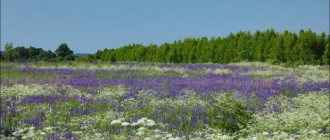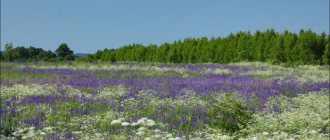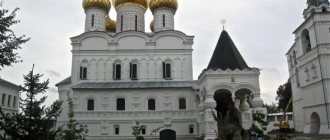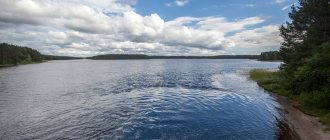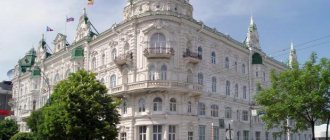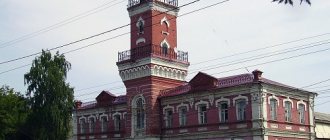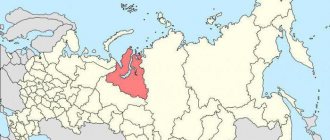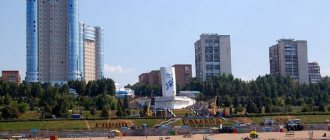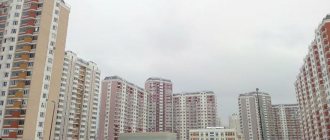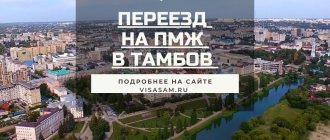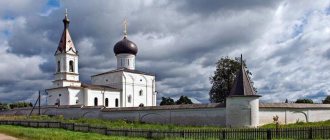The Omsk region is located in the southwestern part of Siberia. The development of this large region began in the 16th century, when the troops of Ataman Ermak came to the Siberian lands. Satellite maps of the Omsk region will help you get an idea of the location of the region, find its cities, roads and other objects. Using the online service you can find buildings, attractions, and train stations. It will prove to be an indispensable assistant when traveling and on a business trip.
The region neighbors Kazakhstan, as well as such Siberian regions as:
- Novosibirsk;
- Tomskaya;
- Tyumen
From north to south, the region is divided into 2 parts by the Irtysh River. On the map of the Omsk region with diagrams you can also find other rivers:
- Ishim;
- Tara;
- Osha;
- Om.
The southern regions are represented by steppe and forest-steppe landscapes, and in the north of the region there are vast swampy areas. The nature and wildlife of the region are unique. There are about 30 nature-protected areas in which wild animals, rare birds and fish live. In every corner of the region there are beautiful places, historical and architectural attractions, which can be found on a map of the Omsk region with districts.
Before you go to this region, research it using an online service. You can find out how to get to any locality by car - the map will indicate the desired route, which cities have rail connections and how to reach the region by air. In any area on the map of the Omsk region you can find interesting objects, monuments and nature reserves.
Omsk region
The population of the Omsk region has been decreasing every year over the past few years. The region experienced an outflow of residents to regions and republics with a more favorable climate and economic situation.
The region is located in the southwest of Siberia. The largest city is Omsk, which has a population of just over one million 100 thousand people.
The main industries in the region are construction and trade. Industry is represented by military and agricultural engineering, petrochemical and food industries. There are no large energy facilities in the region.
During the Soviet Union, especially in the 70s, the Omsk region was one of the most developed Siberian regions. For the decline in which the region is today, many blame its governor Leonid Polezhaev, who led the region from 1991 to 2012.
Experts note that the real sector of the economy is in poor condition. One of the reasons is the large outflow of qualified specialists to Tyumen and Novosibirsk, located nearby.
Today the Omsk region is developing in a cluster manner. At the same time, it does not have the prerequisites for a sharp rise, but it can achieve success through the integrated development of all of Siberia. Its key assets are land, mechanical engineering and petrochemical production.
General information about the Omsk region
Distinctive features . Although Russian merchants visited the lands of the Omsk region already in the 15th century, serious development of these territories began in 1584-1585, during the campaign of Ataman Ermak to the southern regions of Siberia. It was then that his troops reached the current borders of the Omsk region, the towns of Tebendy and Tashetkany, whose residents voluntarily recognized the power of Ermak, and not Khan Kuchum. Soon after the death of Ermak, the detachment of Prince Andrei Yeletsky founded the town of Tara, which became an outpost of the subsequent colonization of Siberia.
Tara Fortress
The city of Omsk, founded in 1716 to protect the south of Siberia from the Dzungarian state, became one of the most important administrative centers of Siberia. During the Civil War, it was the capital of White Russia - the state of Admiral Kolchak, elected Supreme Ruler of Russia. After the Reds' victory, Omsk's star sank. But when factories and research centers began to be moved here during the Great Patriotic War, Omsk became the largest scientific and industrial agglomeration in Siberia. The aerospace industry, mechanical engineering, and the development and production of electronic equipment are especially developed here.
Many wonderful, outstanding people were born or worked in the Omsk region. The poet Innokenty Annensky, the artist Mikhail Vrubel, the surgeon Leonid Poluektov, the actor Mikhail Ulyanov, and General Dmitry Karbyshev, who was brutally tortured by the Nazis, were born here. In 1850-1854, the great classicist Fyodor Dostoevsky served his sentence here at hard labor, and during the Great Patriotic War, famous designers Sergei Korolev and Andrei Tupolev worked here.
The nature of the Omsk region is beautiful and diverse. There are 29 specially protected natural areas here, including two federal reserves with a total area of 132 thousand hectares.
Nature of the Omsk north. Photo by Gerantich (https://fotki.yandex.ru/users/komp-anatolij/)
Geographical location . The Omsk region is located in the south of Western Siberia. In the south it borders with Kazakhstan, in the west and north - with the Tyumen region, in the east - with the Novosibirsk and Tomsk regions. It is part of the Siberian Federal District.
The entire territory of the region lies in the middle reaches of the Irtysh, which cuts it and divides it into right-bank and left-bank parts. On the right bank the Barabinskaya Lowland stands out. In its northern part there are swamps, in the southern part there are lakes and salt marshes. On the left bank, it is worth noting the Ishim Plain, which has a flat topography, with a maximum height of 140 m. Many lakes are located in the Kamyshlovsky Log valley, crossing it from west to east. On the right bank there is also a special form of relief - manes. These are flat elevations 5-6 meters high and 2-4 km long.
The population of the Omsk region is 1973985 people. Urban residents make up 72% of the total population. A large influx of people to the Omsk region began after the Great Patriotic War, when Omsk began to turn into a large scientific and industrial center.
Despite the economic crisis of the 90s, the population of the region has remained virtually unchanged for 20 years and fluctuates at the level of 2 million people. This is also facilitated by the positive value of natural population growth, equal to 1.1 people. per 1000 inhabitants.
Before the Russians settled the Omsk lands, many peoples lived here - Mongols, Dzungars, Kalmyks, Magyars, Mansi, Khanty, Kemaki, Teleuts, Shors, Uzbeks, Tajiks, Nogais, Turkmens. Now Russians make up 83.34% of the region's population. In second place are the Kazakhs (3.96%). Ukrainians are in third (2.62%).
St. Nicholas Monastery, village. Bolshekulache. Photo by Gerantich (https://fotki.yandex.ru/users/komp-anatolij/)
Crime. 47th place in the criminal ranking of regions of the Russian Federation is a pretty good indicator for a region located in Siberia. Crimes are committed here, but lately high-profile and scandalous crimes have been quite rare here. And so, there is crime, but mostly petty, everyday crime. In the first half of 2011, 8.22 crimes were committed here for every thousand residents.
The unemployment rate in the Omsk region is 6.86%. In 2001 it was much higher - about 10%, and this figure has been steadily decreasing every year. The level of income in the Omsk region is quite modest compared even to the neighboring Tomsk or Tyumen regions. Thus, in 2012, the average salary in the Omsk region was 21,712 rubles. But there are many industries where this figure is much higher, and even exceeds the 30 thousand rubles mark. For example, in the extraction of fuel and energy minerals - 47 thousand rubles, in the production of petroleum products and nuclear fuel - 53.8 thousand rubles, in the field of financial activities - 35 thousand rubles, in the field of public administration and security - 30 thousand rubles.
Property value. 1.3 million rubles is the minimum price level for one-room apartments in Omsk. But there are many more offers in the range of 1.8 - 2 million rubles. Two-room apartments are sold at prices from 2 to 3 million rubles, three-room apartments - from 2.5 million rubles. and higher.
The climate of the Omsk region is continental. There are several climate zones located here. In the north there is taiga, then there is forest-steppe, and in the south there are steppes. Winters here are harsh, and summers are dry and hot. In January the average temperature is −20°C, in July +18°C. But in winter, thirty-degree frosts are not uncommon, as in summer - thirty-degree heat. The northern regions have high humidity, and precipitation there is twice as much as in the south - 500 mm versus 250 mm per year.
Omsk. River station. Place where the Om flows into the Irtysh. Photo by Mikhail V. (https://fotki.yandex.ru/users/mixail-moiseenko2008rest/)
Region area
The area of the Omsk region is more than 141 thousand square kilometers. This amounts to almost 1 percent of the entire country.
According to this indicator, the region to which this article is devoted ranks 28th in the country. Between the Republic of Bashkortostan and the Orenburg region. If we take into account only the Siberian Federal District, then in terms of area the Omsk region ranks 8th, behind the Krasnoyarsk, Altai and Transbaikal territories, the Irkutsk, Tomsk and Novosibirsk regions, and the republics of Buryatia and Tyva.
General information
The Omsk region of Russia is located in the south of Western Siberia, in the Middle Irtysh region. The area of the region is 139.7 thousand sq. km, the population is 2146 thousand people, 67% of the population lives in cities (2001). The region includes 32 districts, 6 cities, 24 urban-type settlements (2001).
The administrative center is the city of Omsk. The region was founded on December 7, 1934 and is part of the Siberian Federal District.
The Omsk region borders on Kazakhstan in the south, Tyumen in the west and north, and Tomsk and Novosibirsk regions in the east.
The surface of the region is a gently undulating plain (height up to 146 m); in the south, ridge-like hills (ridges) that stretch for several kilometers are typical. In the northern part there are vast wetlands. The main river is the Irtysh with its tributaries (the largest is the Tobol). There are many lakes in the region, mostly salty in the south, fresh in the north, the largest of which are: Ik, Tenis, Saltaim, Ebeity.
The climate is continental. Winter is long and cold, the average temperature in January is -20°C. Summer is warm and short, the average temperature in July is +20°C. Precipitation is 300-400 mm per year.
The Omsk region is located in the zones of southern taiga, mixed forests, forest-steppe and northern steppes. The soils are predominantly chernozem and meadow-chernozem, in the north - sod-podzolic. Forests occupy 24% of the region's territory. The main species: cedar, spruce, fir, birch and aspen. Mixed forests are replaced to the south by a strip of deciduous birch-aspen forests, gradually turning into forest-steppe zones. Preserved: in the forest zone - squirrel, weasel, ermine, fox, reindeer, elk, roe deer, wolf, bear; in the forest-steppe - fox, mountain hare, steppe ferret; in the steppe - red-cheeked ground squirrel. There are many ducks and geese on numerous lakes and oxbow lakes in summer. In the steppe and forest-steppe zones there are black grouse and gray partridge; in the forest - capercaillie. The shores of the lakes are surrounded by dense groves of birch, aspen, common willow, and silver poplar.
Population
The population of the Omsk region in 1959 was one million 645 thousand people. This data is provided by the All-Union Population Census. This is the first fairly accurate statistical information available for this region.
Subsequently, the population of the Omsk region systematically increased. By 1987, it had surpassed the two million mark. This figure reached its maximum in 1993. At that time, two million and almost 169 thousand people lived in the Omsk region. After this, the number of residents began to decrease every year. In 2010, the region's population was less than two million.
It was only recently possible to correct this situation. Only in 2015. The population census of the Omsk region demonstrated that then, for the first time in 12 years, there was an increase, not a decrease, in the number of residents in the region. Over the next two years, the population of the Omsk region increased slightly, but increased. In 2021, there has been a slight decline again.
Districts of Omsk region
There are 32 districts on the territory of the Omsk region. The largest are Omsk, Tara and Tavrichesky districts.
The population of the Omsk region is more than 100 thousand people, the administrative center is in the village of Rostovka. About 45 thousand people live in the Tara district (the administrative center is in the city of Tara), and about 36 thousand people live in the Tavrichesky district (the administrative center is in the working village of Tavrichesky).
The village of Znamenskoye, Omsk region, requires special mention. This is the center of the Znamensky district. Several large Siberian rivers are concentrated in it - the Irtysh, Osha, Bolshoi Aev, Bolshoi Nyagov and Shish.
The village of Znamenskoye, Omsk Region, is a striking example of a dying settlement. If before the Great Patriotic War almost 40 thousand people lived in the area, today there are about 11 and a half thousand left. At the same time, a little more than 5 thousand people live in Znamensky itself.
Districts on the map of the Omsk region
The region is divided into 32 districts. The northern regions have large areas, while the southern ones are smaller but densely populated. The main district of the region is Omsk. Large highways pass through it, which are indicated on the detailed road map of the Omsk region, and the Trans-Siberian Railway. You can also come here by air or water transport. In the Omsk region there is the Achair outpost - this is one of the first settlements that was built by Russian people.
If you move around the map of the Omsk region with settlements, you can find areas with unique and interesting sights:
- Lake Ulzhay - in Cherlaksky district;
- natural park "Batakovo" in Bolsherechensky district;
- St. Nicholas Monastery - in the Omsk region;
- Rock "Devil's Finger" in Gorky district.
If you are traveling around the region, then in each district, using a detailed map of the Omsk region, you can create your own route and visit interesting places. For those who are on a business trip, the online service will help them find hotels, enterprises, administrative institutions, and cafes.
National composition
The ethnic composition of the Omsk region is very diverse. There are 35 nationalities recorded in the region. Most of all Russians live in the region. Their number is 85% of the total number of residents of the region.
In all districts of the Omsk region, the Russian population is represented in the absolute majority. In some, this figure exceeds 90%. The fewest Russians live in the Pavlogradsky district - only 52%. 24% of Ukrainians and 16% of Kazakhs also live here.
The Chuvash population of the Omsk region is among the ten largest diasporas in the region. According to the latest census, more than three thousand Chuvash live in this Siberian region. Also, the top ten largest nationalities include, in addition to Russians, Ukrainians, Kazakhs, Germans, Tatars, Armenians, Belarusians, Azerbaijanis and Uzbeks.
The region is also home to such rare nationalities as Finns (about 200 people), Greeks (about 500 people) and Chinese - almost 800 inhabitants.
Religious composition
Since the vast majority of residents in the region are Russians and Ukrainians, the dominant religion is Orthodoxy. On the territory of the Omsk region there are several places popular among Christian pilgrims.
The Achair convent, founded back in 1890, stands apart. The calm life of the monastery was disrupted by the arrival of Soviet power. One of the Gulag colonies was founded on the territory of the monastery. Up to a thousand people were kept there at a time. The prisoners did not even have to be shot. They simply died from unbearable conditions, hunger and cold.
In the village of Bolshekulache there is the St. Nicholas Monastery. The first temple in these places appeared in the middle of the 18th century. At the beginning of the 20th century a stone church was built. But it was destroyed almost immediately after the victory of the October Revolution. They began to restore the building for the monastery in 1988. The work was completed in the mid-90s. Today it is one of the most revered Orthodox sanctuaries in the temple. In it you can see and worship icons and the Life-Giving Mother of God Spring.
In the Maryanovsky district, on the territory of the village of Tatyanovka, the St. Seraphim Monastery operates today. According to a legend that is still popular, it was founded by Mother Varvara. She went to live in the forests, lived in a dugout and prayed incessantly. She built the first, wooden part of the temple with her own hands. A chapel was later located in it.
Resettlement of residents of the Omsk region
The entire population of the region is distributed among 6 cities, 21 workers' settlements and rural settlements. The latter number more than one and a half thousand.
More than 55% of the population of this Siberian region permanently reside in the capital of the region, the city of Omsk. In this region, this is the highest concentration of residents in the regional center compared to all other regions.
The settlements are mainly located along key transport networks. This is primarily the Trans-Siberian Railway, which pierces the region from west to east, as well as the Irtysh River, great for these places, which flows from south to north. Thus, a kind of transport cross is obtained. By the way, he is depicted on the region’s coat of arms.
Map of the Omsk region with cities and villages
There are 6 cities and more than 1.5 thousand villages and settlements in the region. The capital of the region is the city of Omsk. This is a million-plus city and a large industrial, commercial, sports and cultural center of the Irtysh region. If you enlarge the map of the Omsk region with cities and villages, you can see all the streets with house numbers. A large number of ancient architectural buildings have been preserved in Omsk. There are also modern sports facilities, theaters and museums.
The second most populous and most interesting city in terms of history and region is Tara. This is the 1st city built in the region. Currently, it is a settlement with preserved wooden architecture, and previously it was inhabited by merchants and industrialists who developed the lands of the region, built plants and factories, and financed the construction of railways and roads.
Small towns in the region include:
- Tauride;
- Kalachinsk;
- Isilkul;
- Nazyvaevsk.
A large number of people live in rural settlements, which are presented on the map of the Omsk region with villages. In small settlements, crop and livestock farming is carried out, and eco-tourism is actively developing.
Fertility and mortality
They began recording such an indicator as the birth rate in the Omsk region in 1970. At that time, almost 16 newborns were born for every thousand inhabitants. This figure grew until 1985, when it amounted to almost 20 babies per thousand inhabitants. Then it began to fall sharply. By 2001, only 8.5 new citizens were born per thousand Omsk residents.
If we talk about mortality rates, they have been growing steadily since 1970. From almost 8 deaths per thousand inhabitants to 15.5 in 2005. Only in recent years have these statistics been stabilized. And mortality, although at a slow pace, is falling. According to the latest data, a little more than 13 people die every year per thousand residents of the Omsk region.
Lifespan
Life expectancy in the region was first recorded in 1990. Then it was almost 70 years. Until 1994, life expectancy declined sharply, reaching approximately 65 and a half years.
Since the mid-90s it began to grow again. In recent years, there has been an increasing trend towards an increase in average life expectancy in the Omsk region. According to the latest data, this figure is almost 70 years. It was the same in 1990, when statistics were just starting to be kept.
Today, the Omsk region is experiencing certain problems with population growth, since the number of people traveling outside the region exceeds those who choose Omsk as their new place of life.
Economy and industry of the Omsk region
The economic component of the region is represented by several industries and agriculture. Enterprises of such industries as:
- military;
- chemical;
- aerospace;
- mechanical engineering;
- petrochemical
Enterprises that can be found on Yandex maps of the Omsk region produce a wide variety of goods:
- furniture;
- Food;
- beverages;
- Construction Materials;
- clothes;
- shoes.
Agriculture makes a large contribution to the regional budget. Potatoes, legumes, cereals, and fodder crops are grown in the region. Food industry enterprises produce semi-finished products and other goods from animal products. Cattle, poultry, and pigs are raised in the region.
Large retail facilities belonging to federal retail chains are concentrated in the Omsk region of the region. The service sector is also well developed. There are a large number of hotels, restaurants, and entertainment centers in the regional capital and other cities.
